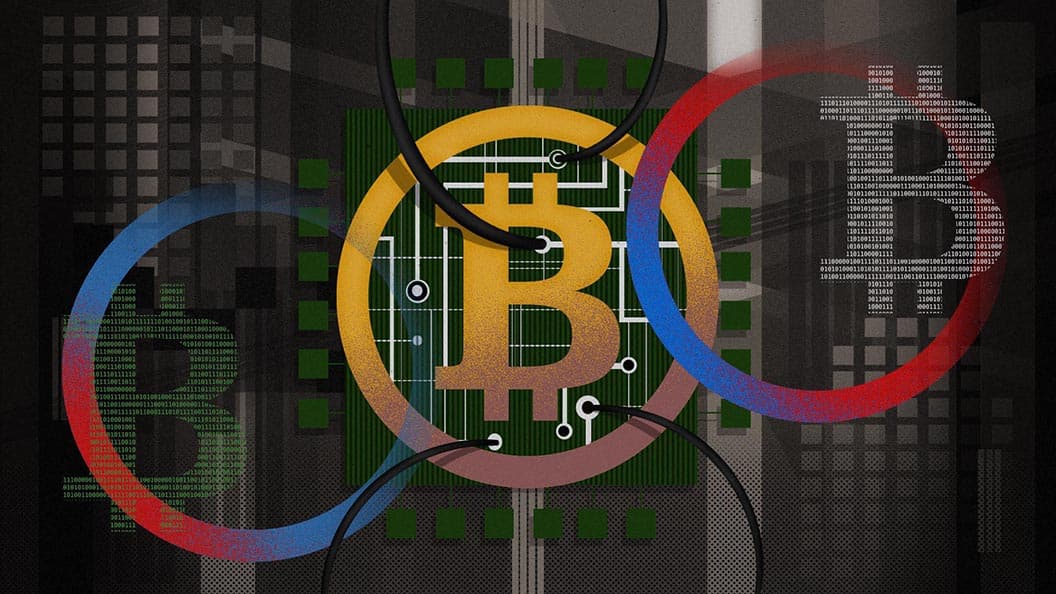Anticipating Bitcoin’s Taproot Upgrade, Here’s What You Need to Know
Taproot will bring smart contracts to bitcoin and fully unleash the power of the Lightning Network while enhancing privacy protections.

Blockworks exclusive art by Axel Rangel
key takeaways
- The first major upgrade to the Bitcoin network since 2017 occurs this weekend
- “Bitcoin Core is now officially out of beta! 🚀 “, wrote Bitcoin developer Matt Whitlock in a discussion of the new version 22.0
The Bitcoin network is activating Taproot, one of its most significant updates since 2017, when Segregated Witness, also known as “SegWit,” was first integrated to address bitcoin’s scaling problem.
According to NiceHash’s countdown timer, the move to Taproot is scheduled to take place early Sunday UTC. The upgrade seeks to address the bitcoin network’s 2021 problem, which is programmability.
With the Cambrian explosion-like growth of decentralized finance (DeFi) during the last year, where its total locked-in value rocketed to nearly $100 billion, bitcoin effectively sat on the sidelines. Sure, bitcoin can be used as collateral via an Ethereum wrapper, but the lack of Bitcoin’s programmability meant its reliance on these projects to access DeFi markets.
Tapscript, Taproot’s programming language, will attempt to solve this. While not as powerful as the programming languages available on the Ethereum Virtual Machine, it’s miles ahead of the primitive scripting language currently available to the Bitcoin network.
A Bitcoin Core milestone
The governance of Bitcoin Core — which, to avoid confusion, Blockworks refers to canonically as simply ‘Bitcoin’ — is a slow and deliberative process. In fact, the Taproot upgrade marks a visible shift in Bitcoin history: its version number. Despite the original release of v0.1 having been way back on January 8, 2009, the intervening 12 years have seen the version number rise to just 0.21.1. At that rate, Bitcoin would not reach a 1.0 version until the late 2060s!
Instead, the project’s core contributors reached a consensus in late 2020 to call the version that activates Sunday v22.0. The rationale from the original proposer was simple. “Honestly I’m just tired of all of the people asking for ‘1.0’ that maybe this’ll shut them up. Skip the whole 1.0 thing and go straight to version 22.0!” he wrote on October 22, 2020.
After over a month of discussion, at a time when bitcoin was trading hands for around $18,500, developer Matt Whitlock chimed in with a comment that looks prescient in retrospect:
“I’m surprised nobody mentioned the obvious implication here: Bitcoin Core is now officially out of beta! 🚀 … Advancing the version number to something greater than 1.0 sends the signal that the software is now ready for prime time.”
One small step, but a step that reflects the maturity of a network that now secures $1.2 trillion in BTC assets.
Learning from the past
Since 2017, the analytical toolkits available to track movement and flow of that BTC on the Bitcoin network has also dramatically increased in availability and granularity. Nansen, which closed a $12 million round this summer, offers the ability for its users to seek actionable trading opportunities by monitoring fund flow from whale or institutional wallets.
Taproot aims to solve this problem through something called the Schnorr Signature algorithm. Schnorr Signatures allow for all digital signatures on a transaction to be combined into one, so a Lightning transaction would not appear to be much different from a regular one. This boosts privacy and allows tighter integration of Lightning into the Bitcoin network, which reduces transaction costs due to combining transactions.
Unlike the introduction of SegWit, which triggered considerable debate among the Bitcoin community and led to the creation of bitcoin cash, Taproot doesn’t seem to have much, if any, opposition. According to a mining pool tracker, Taproot-Activation, nearly all mining pools have approved the upgrade.
Likewise, the price of bitcoin hasn’t moved much as the activation date got closer. It was trading at $64,200 with 8 hours to go before the upgrade, according to CoinGecko, up about 5% in the last 14 days. By contrast, during the SegWit upgrade, the price of bitcoin rallied in anticipation, and nearly doubled afterward.
Macauley Peterson contributed reporting for this story.
Get the day’s top crypto news and insights delivered to your inbox every evening. Subscribe to Blockworks’ free newsletter now.





